Quito, the capital city of Ecuador, sits in the Andean foothills at an altitude of 2,850 meters. It is undoubtedly one of the most attractive cities in South America given its geographic location and its well preserved historic centre that was declared a UNESCO World Heritage site in 1978.
On the opposite end of the scale is Mariscal (new town) or “Gringoland” which is a favourite hangout for both tourists and locals and it’s where you will find most of the hotels, guesthouses, backpackers, bars, eateries and agencies.
The city’s crown jewel is its “Old Town” though, packed with 17th century Spanish colonial architecture, monuments and magnificent churches. The best way to see it is with a self paced walking tour.
We followed the Lonely Planet’s suggested itinerary out of their Lonely Planet Ecuador guide. The walk starts in Plaza Grande and ends in Parque La Alameda for a distance of 3km which takes around 4 hours.
The bustling Plaza Grande centred by its shrine and mixture of paving and gardens is where you start your walking tour. The Plaza is favourite hangout for locals to meet and sit and watch the world go by. The Palacio de Gobierno (Presidential Palace) is at one end of the Plaza and if you happen to be there on a Monday you will see the changing of the guard. If you want to do a tour of the palace then a small booth offers free tickets for specific times. You will need to show your passports on entry.
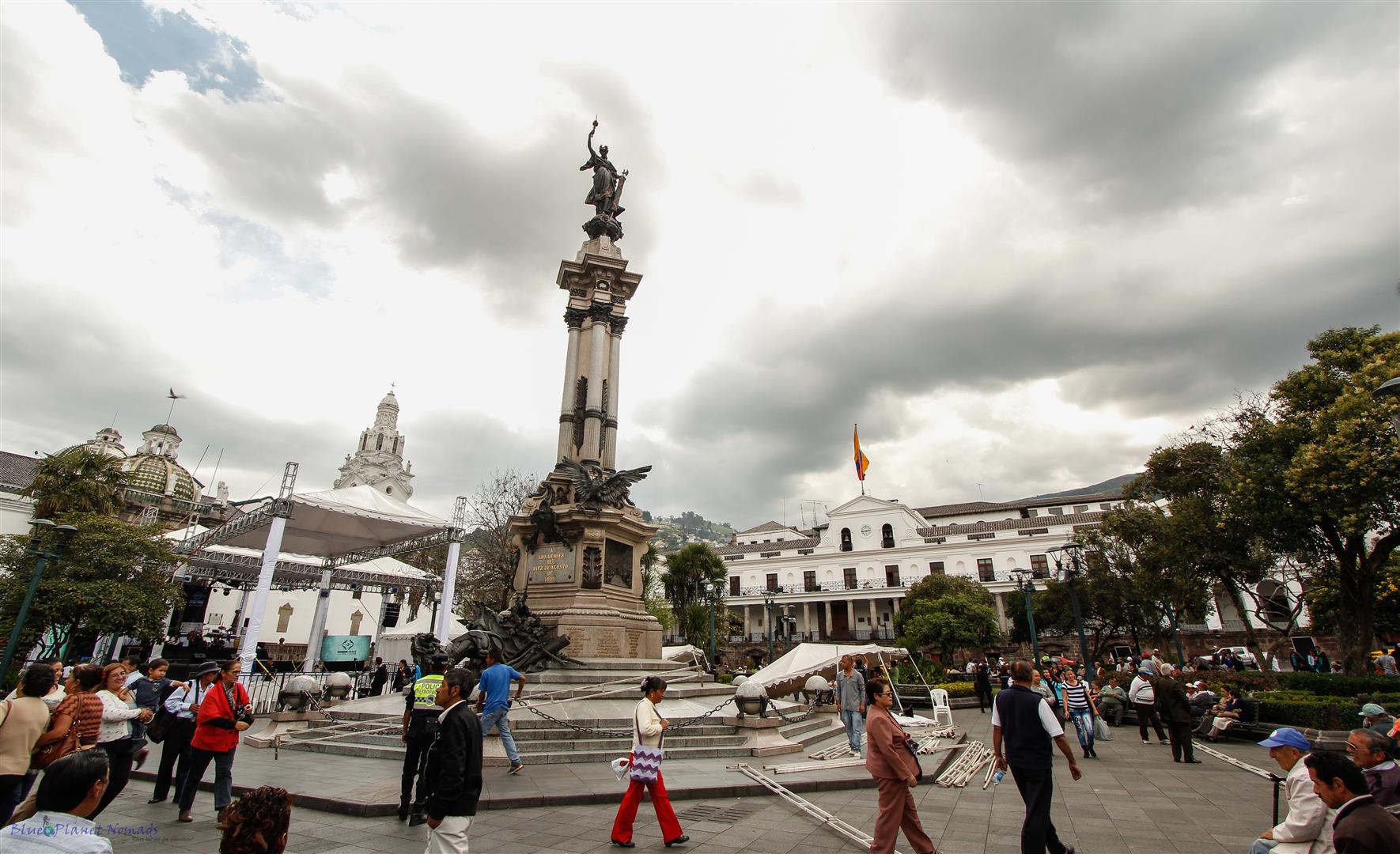
From the Plaza Grande take a walk down Garcia Moreno and head into El Sagrario Quito, a large 17th century chapel that is attached to the 16th century cathedral.
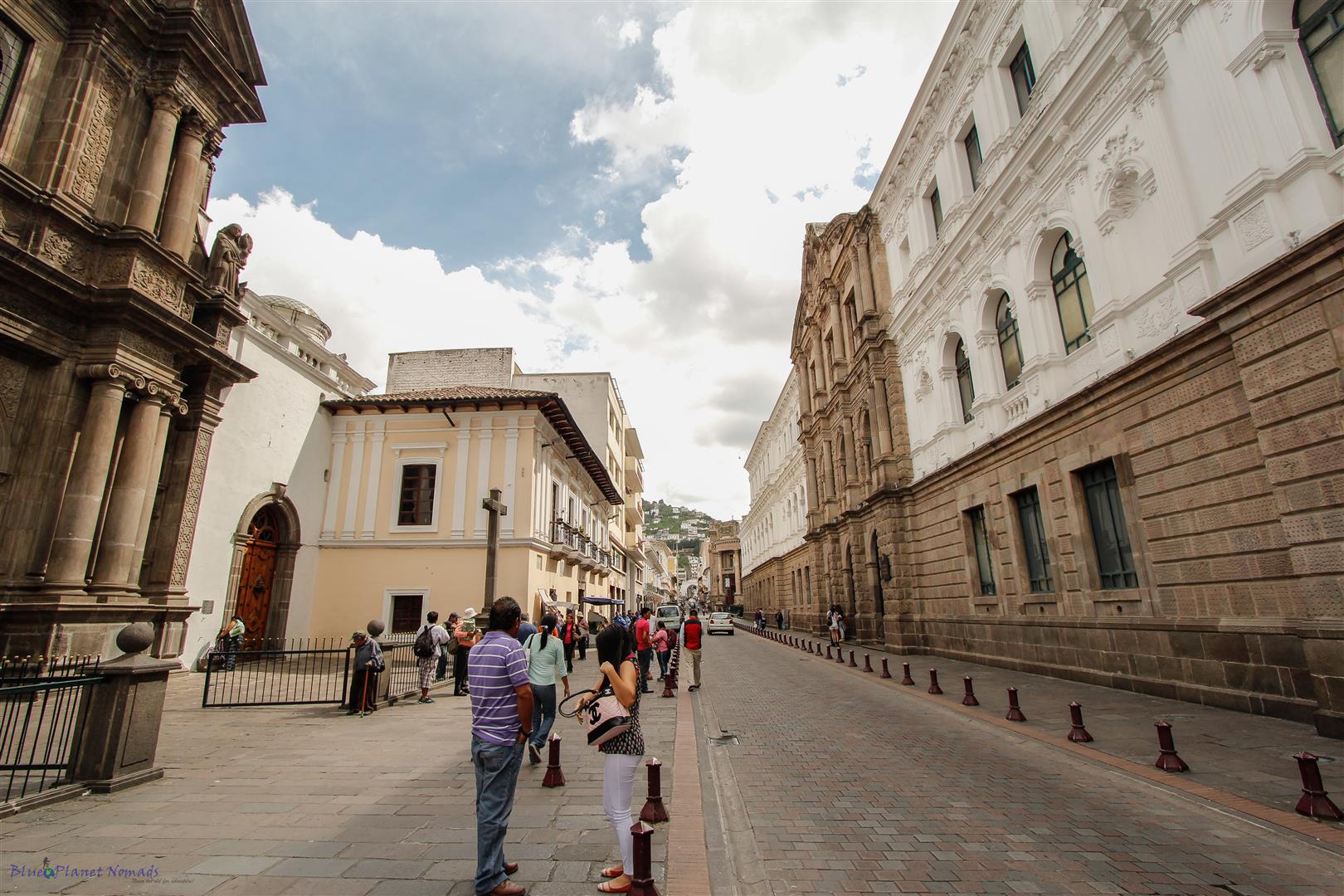
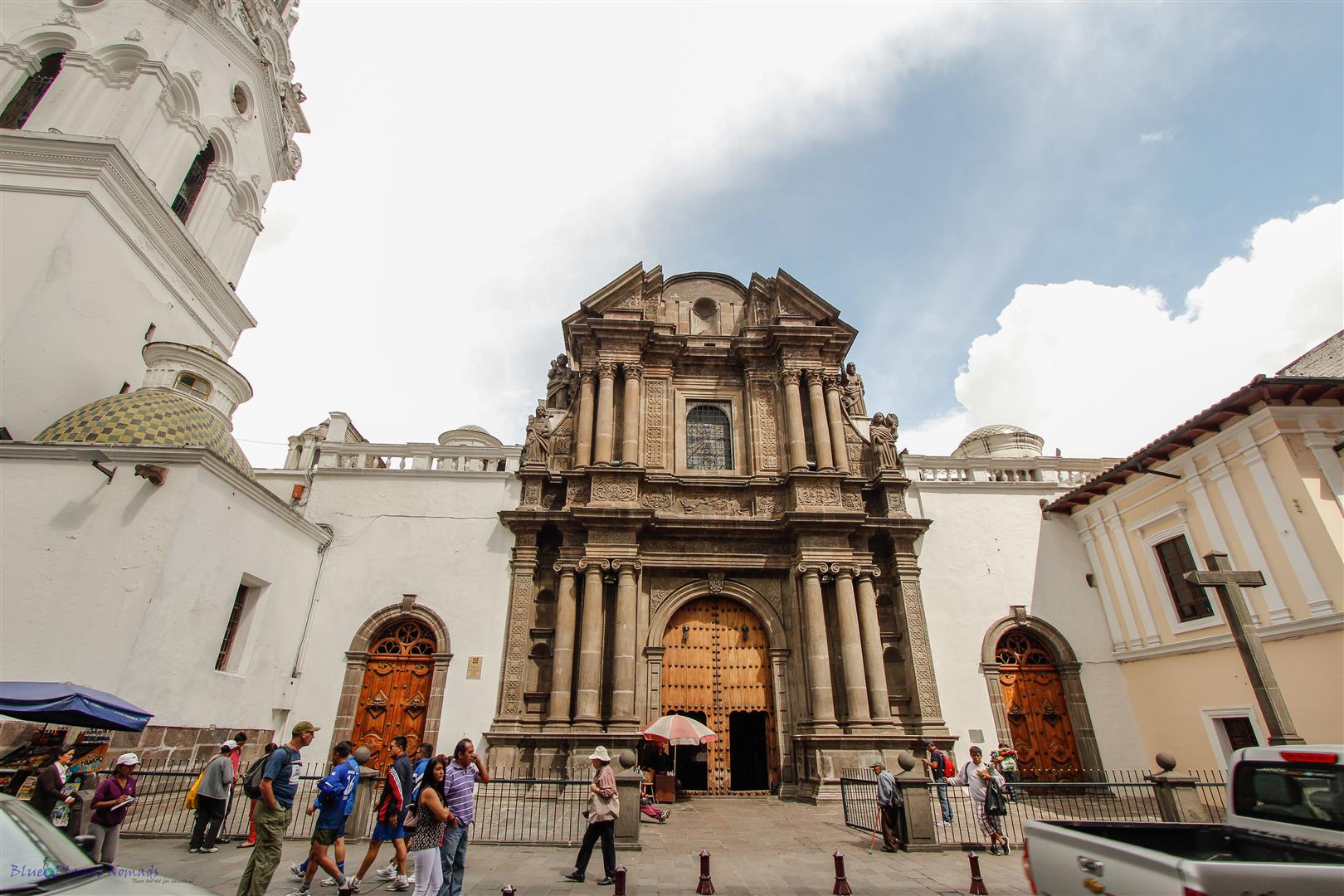
Inside is a fine example of Spanish Baroque architecture with its beautifully ornate decorated columns and arches with exuberance of colour. The central dome is richly covered with frescos representing biblical scenes.
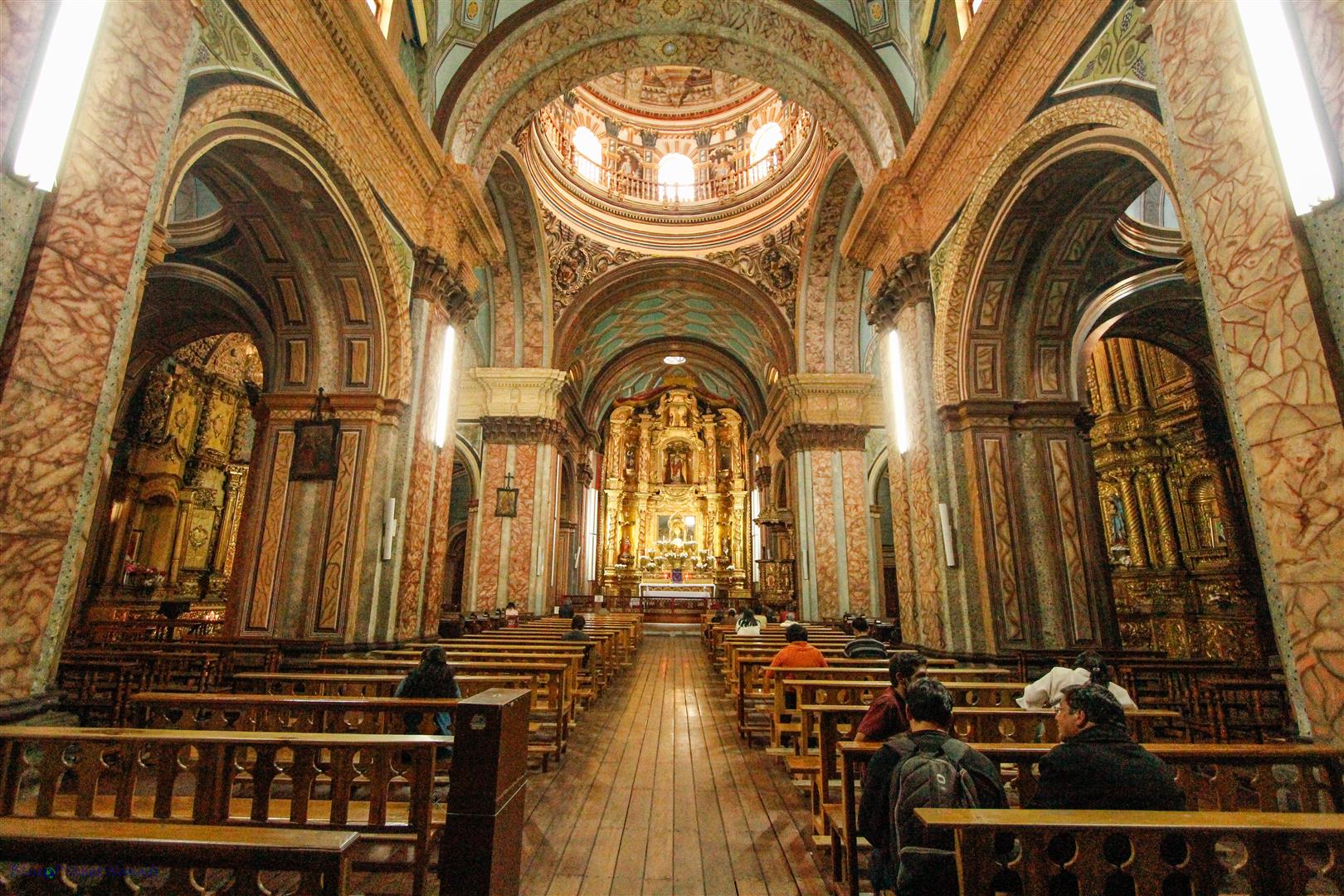
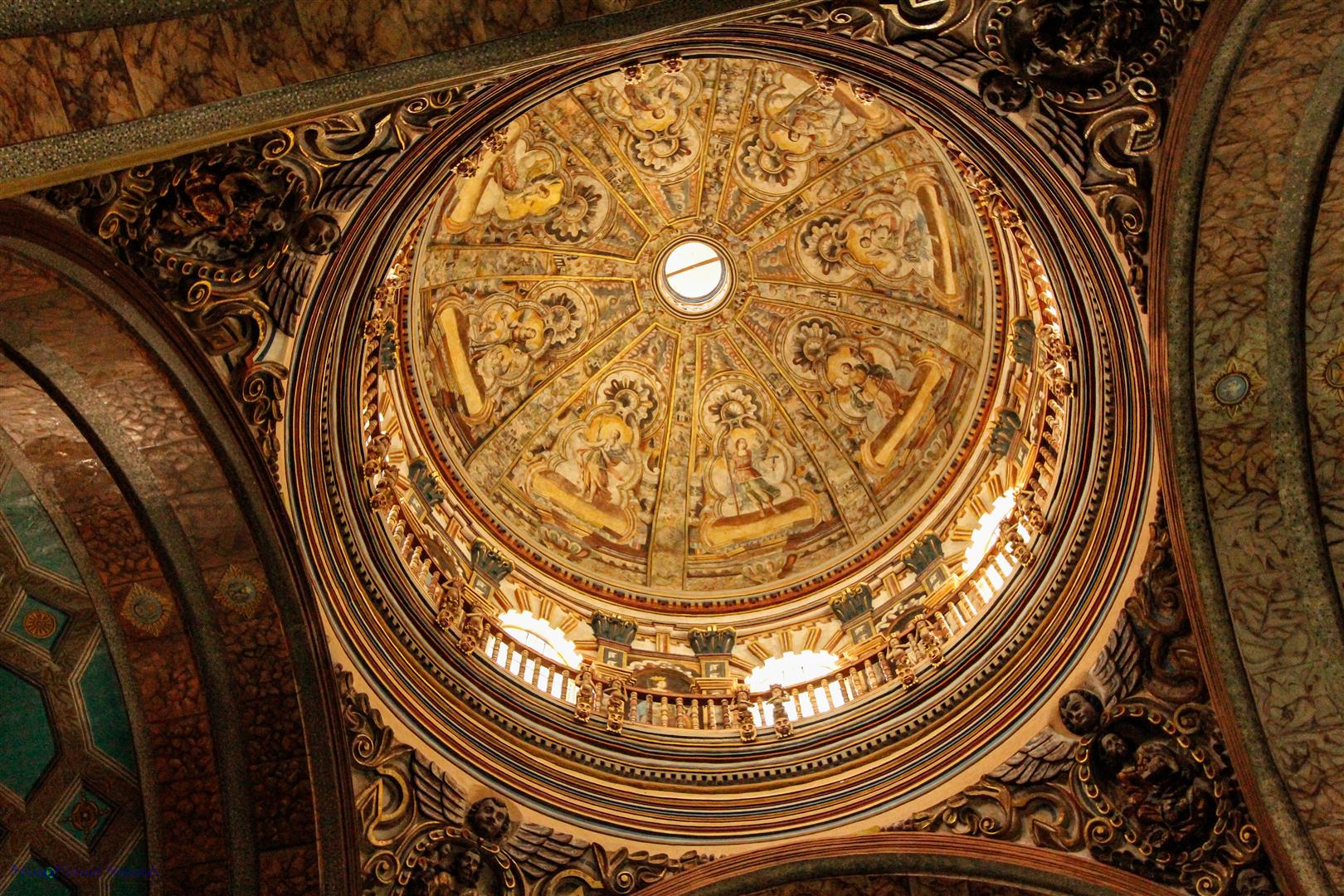
Further down Garcia Moreno is Iglesia de Compania de Jesus (Church of the Society of Jesus) is one of the most beautiful, ornate churches in Quito and one of the best examples of Spanish Baroque architecture. Construction of the church began in 1605 and was completed 160 years later.
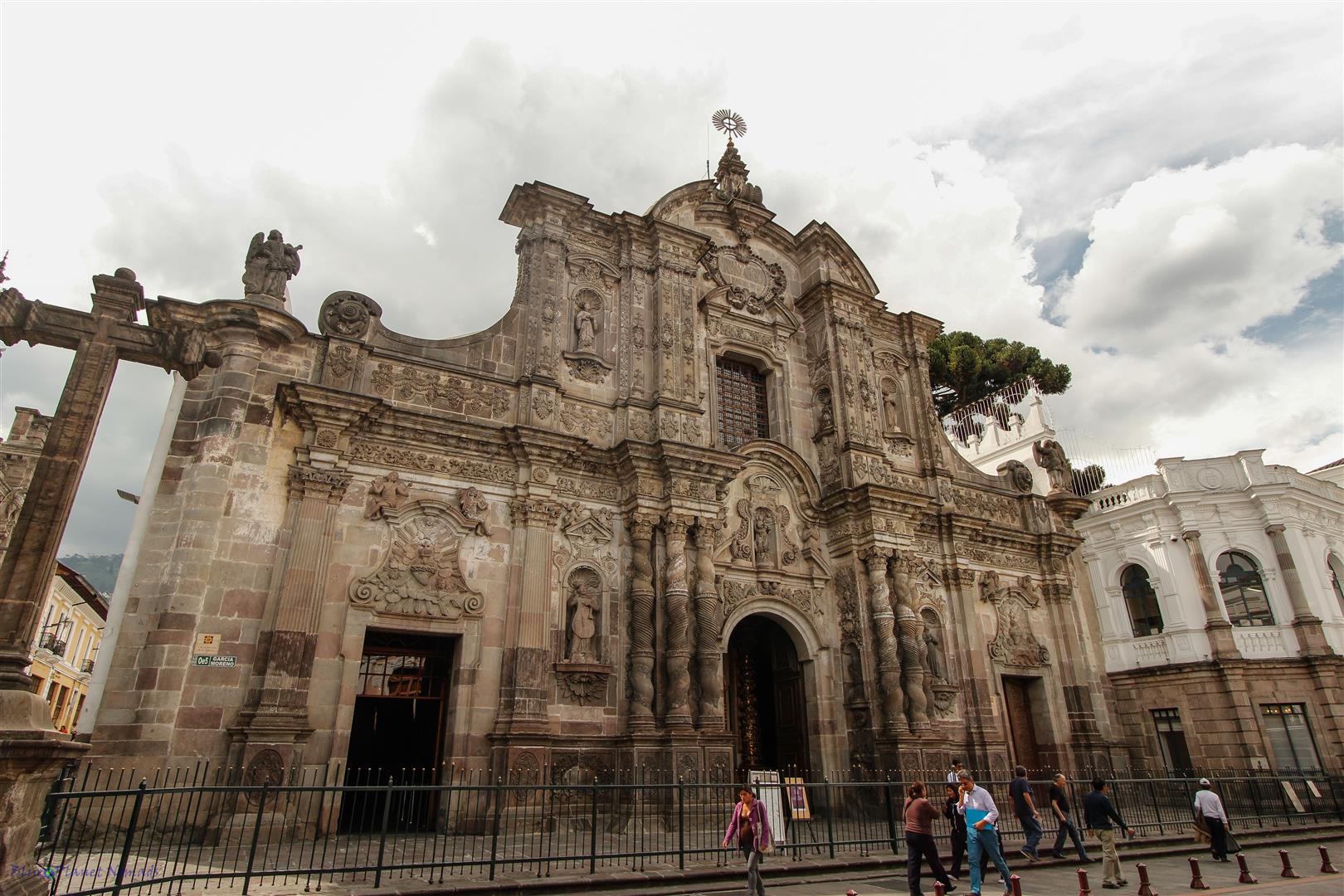
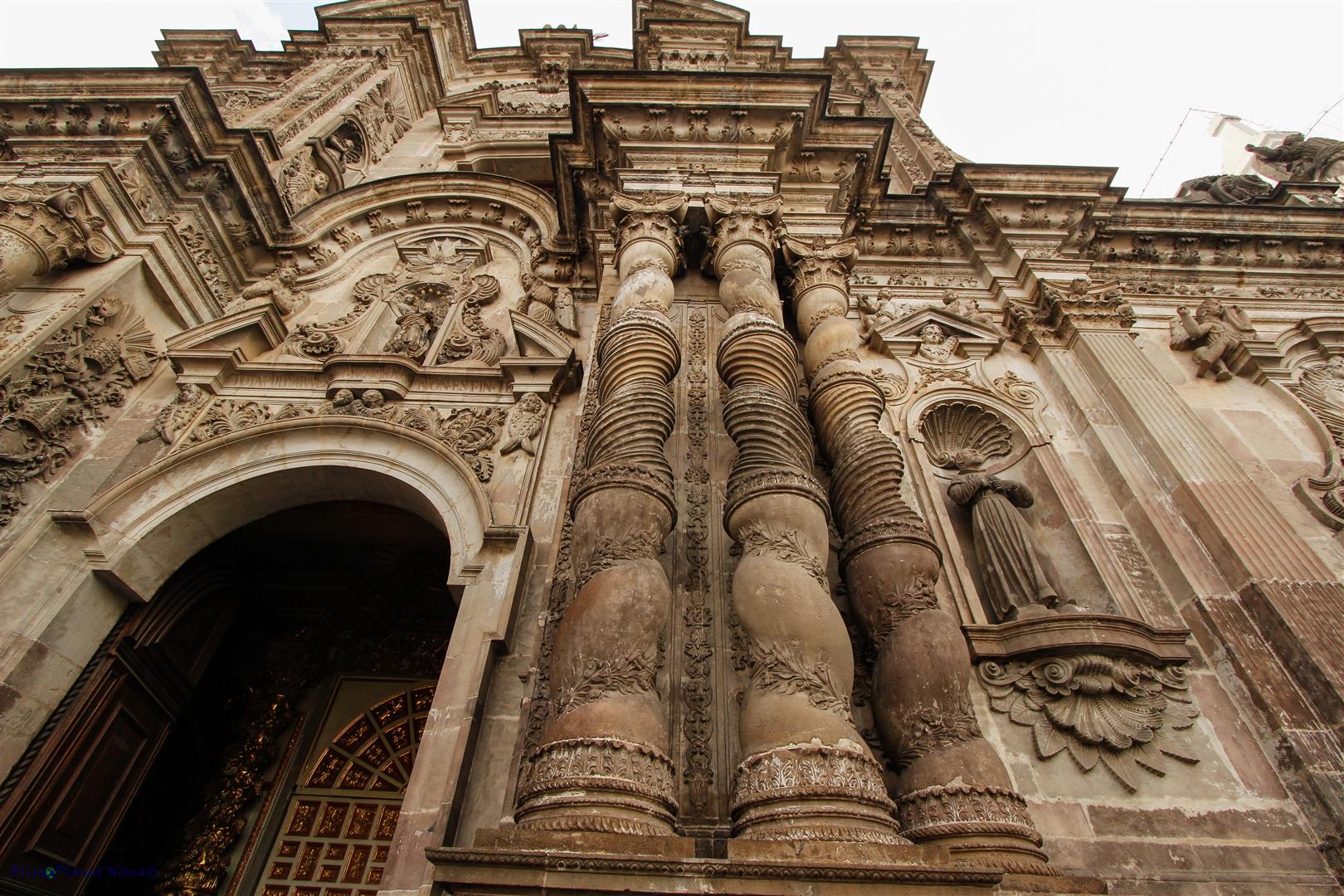
Its facade may be Baroque but its interior is Renaissance, a reflection of the time it took to build. There is a admission fee for this church of $4 for foreigners, students get a discount. Entrance is free on the first Sunday of each month. Photography is forbidden but if they are not looking then quickly sneak a shot or two as the interior is stunning.
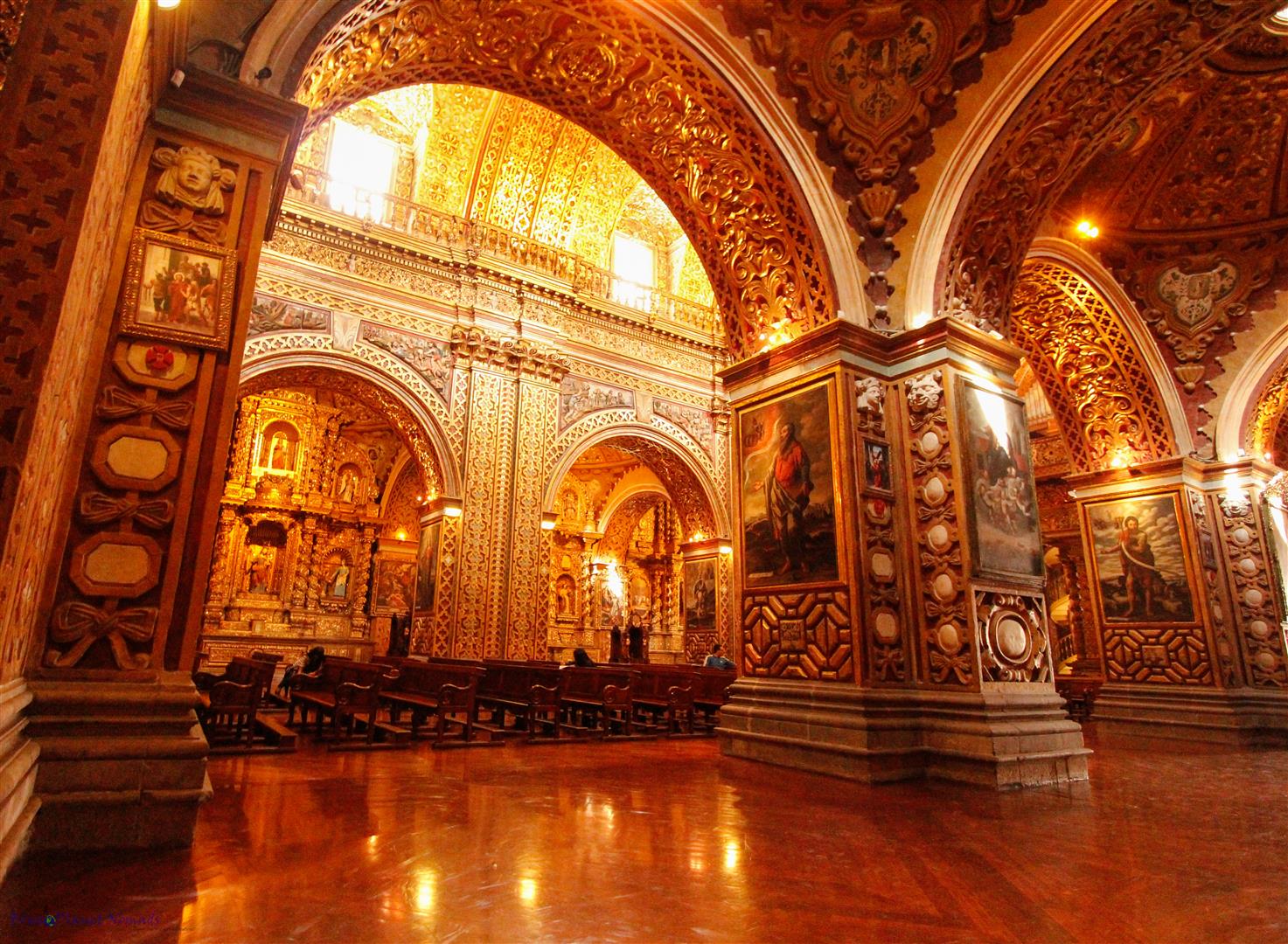
Walking northwest along Sucre will take you to the impressive cobbled Plaza and behind it the beautiful white Monastery of San Francisco dating from the 16th century. The Monastery is free to enter and is incredibly ornate inside, plenty of gold and artwork.
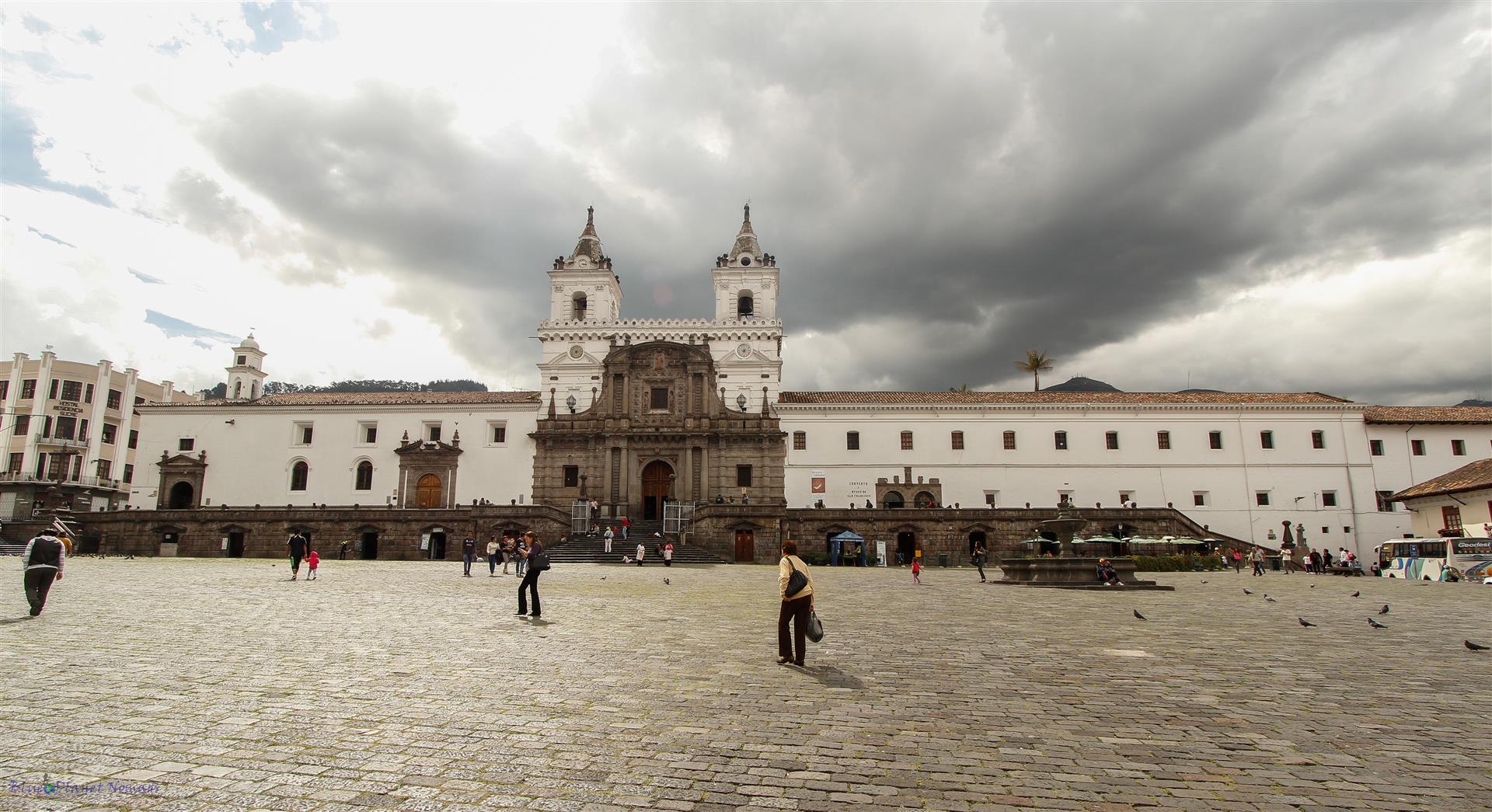
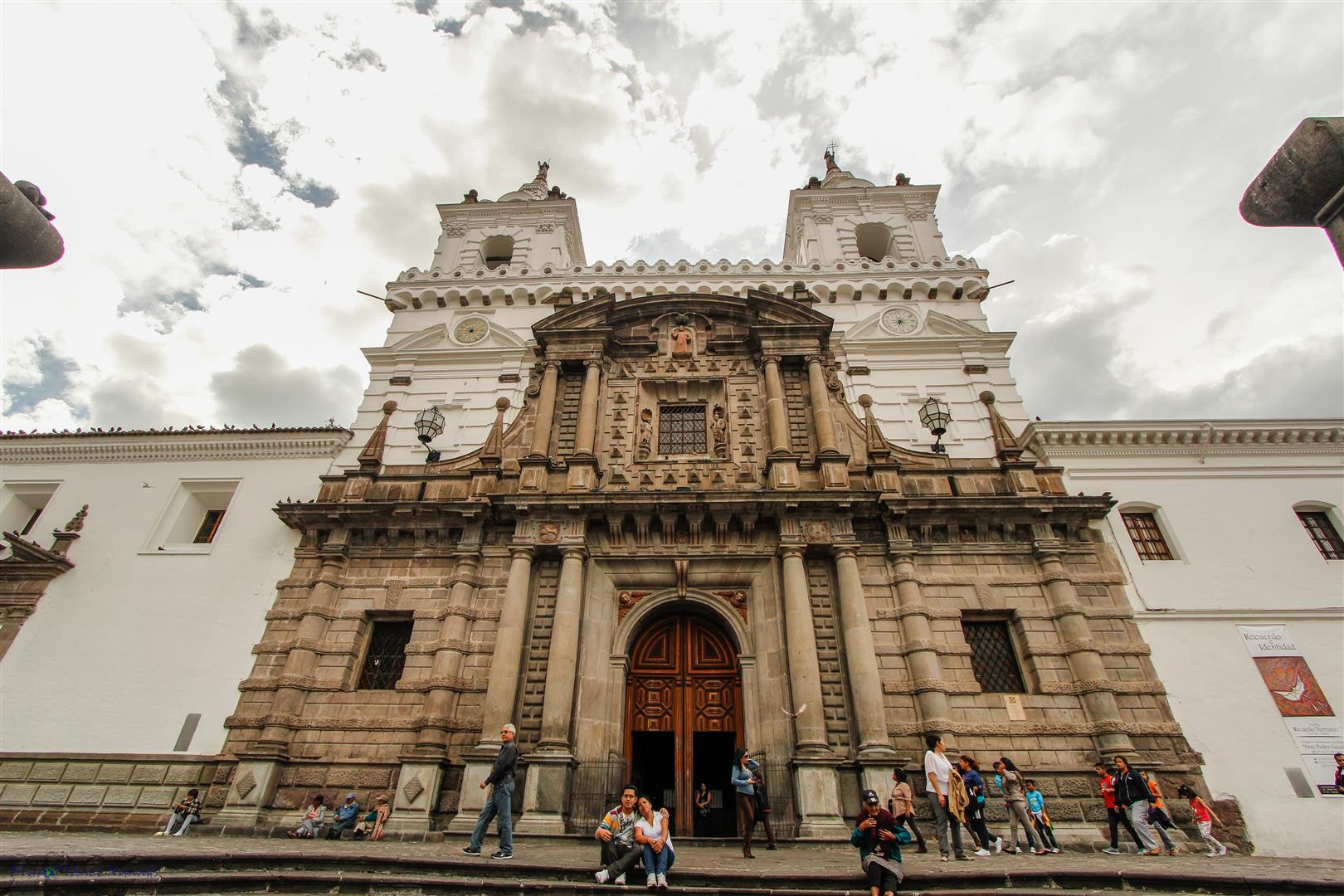
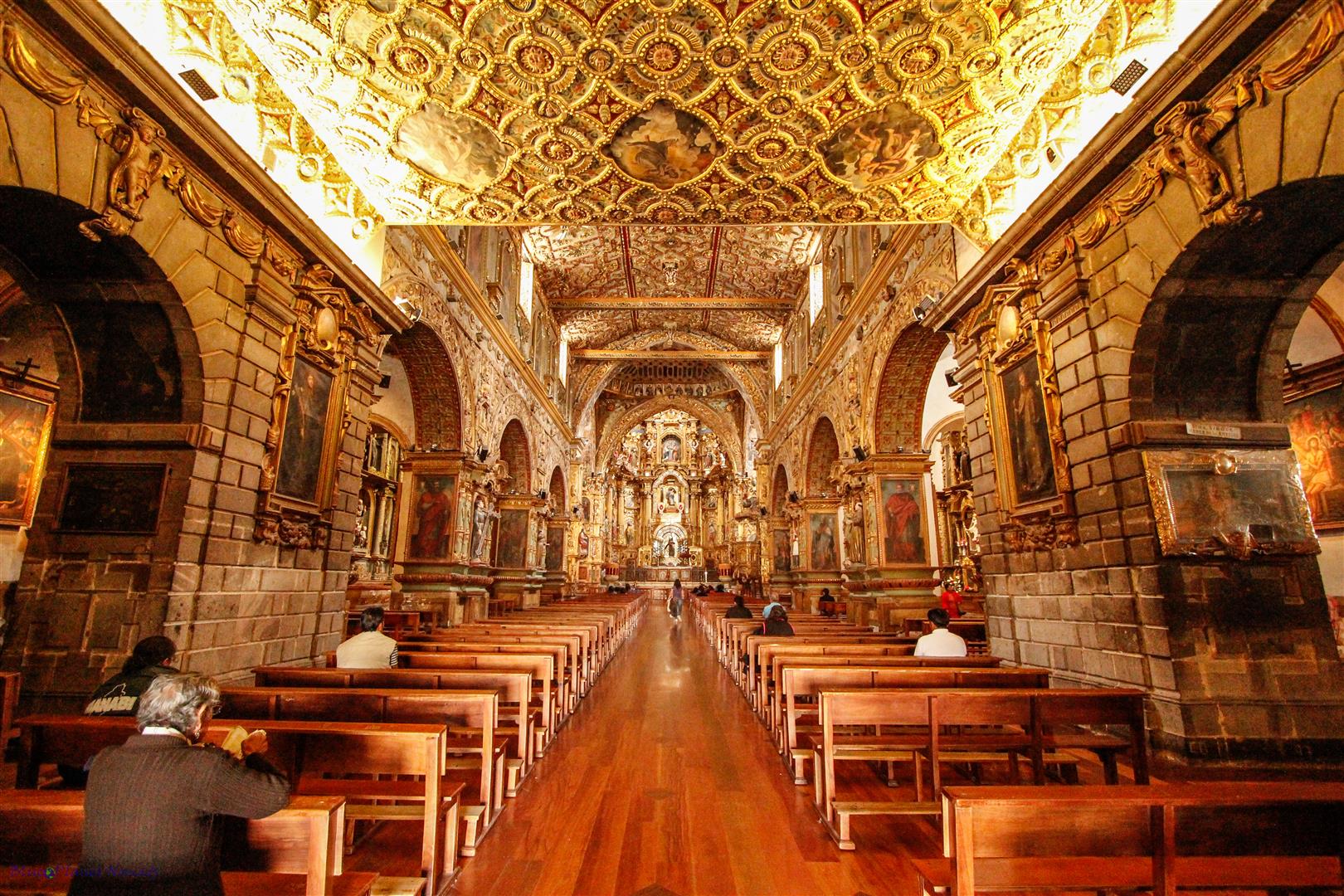
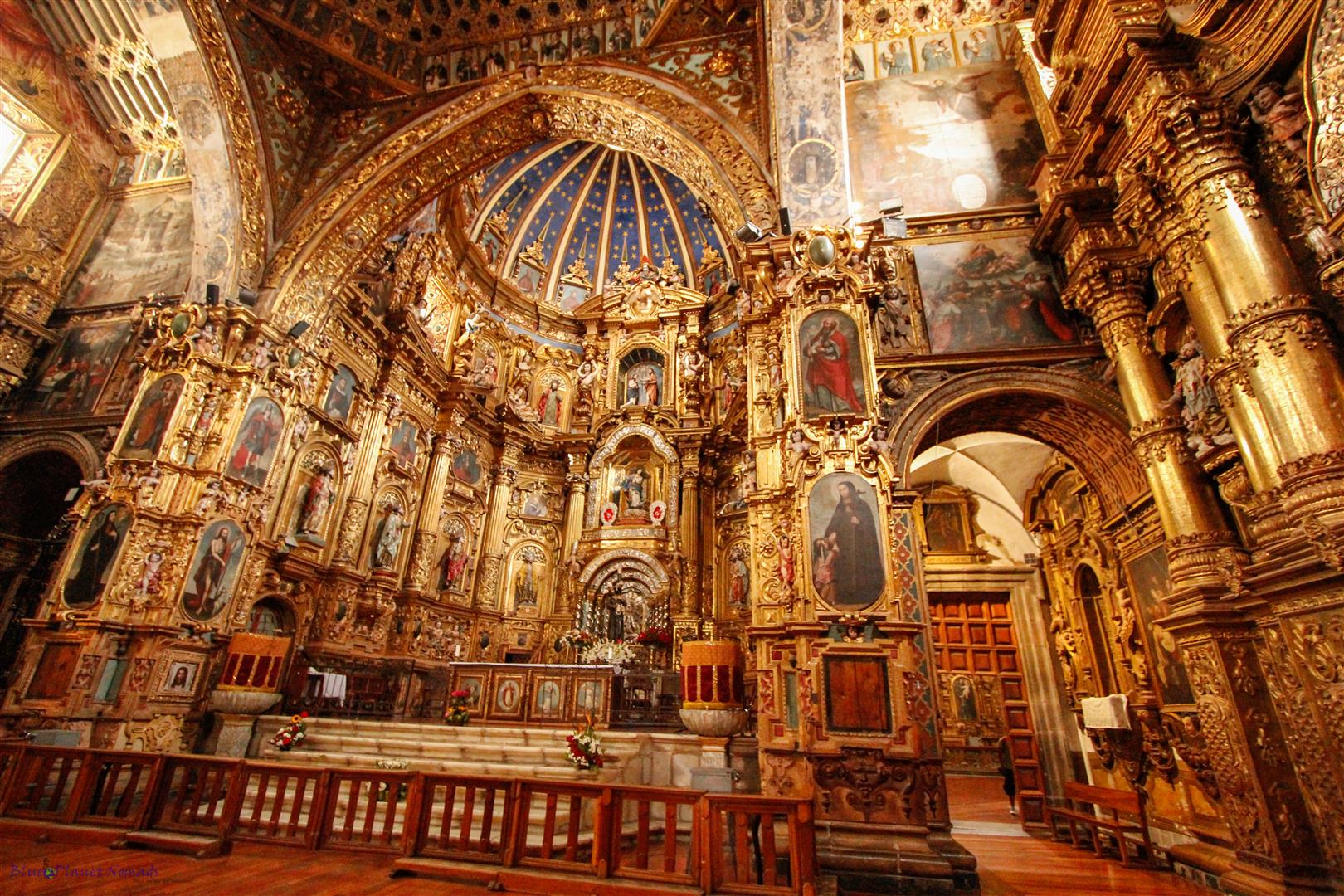
The plaza offers you lovely views of the southern part of Quito as its situated on an incline. It’s also a great people watching place and if you are lucky you might spot a couple of elderly locals smuggling pigeons into a blanket! (dinner perhaps?)
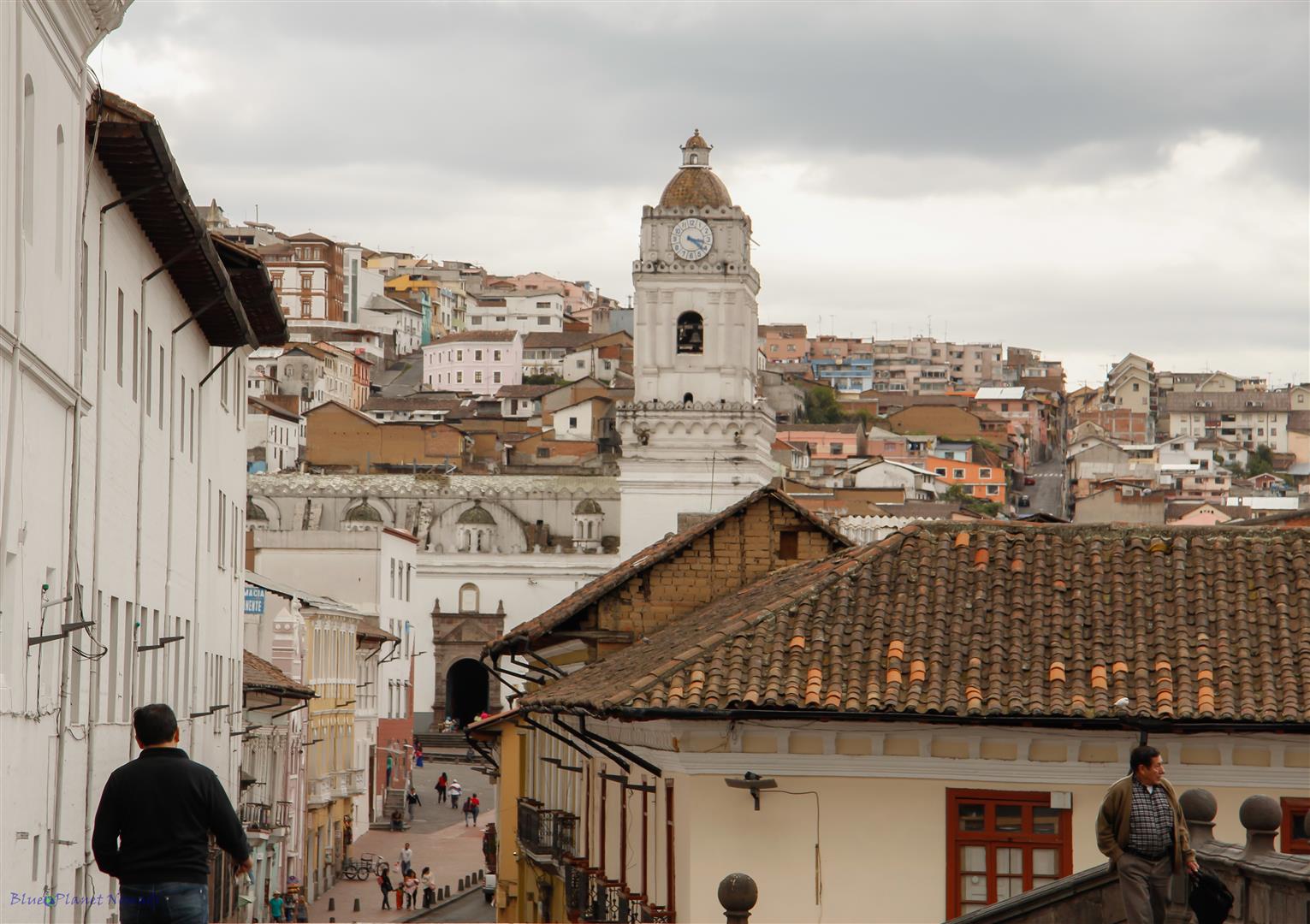
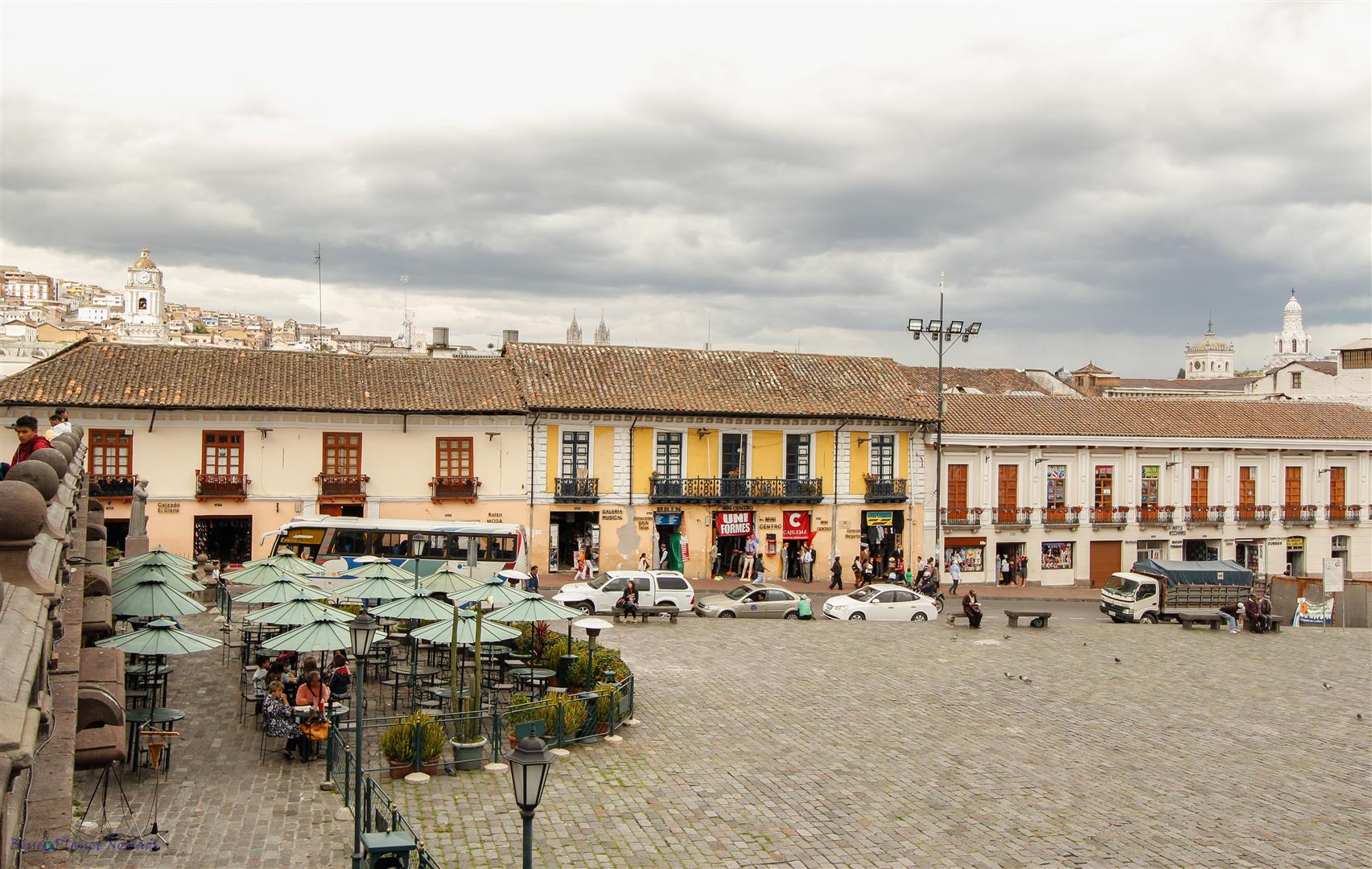
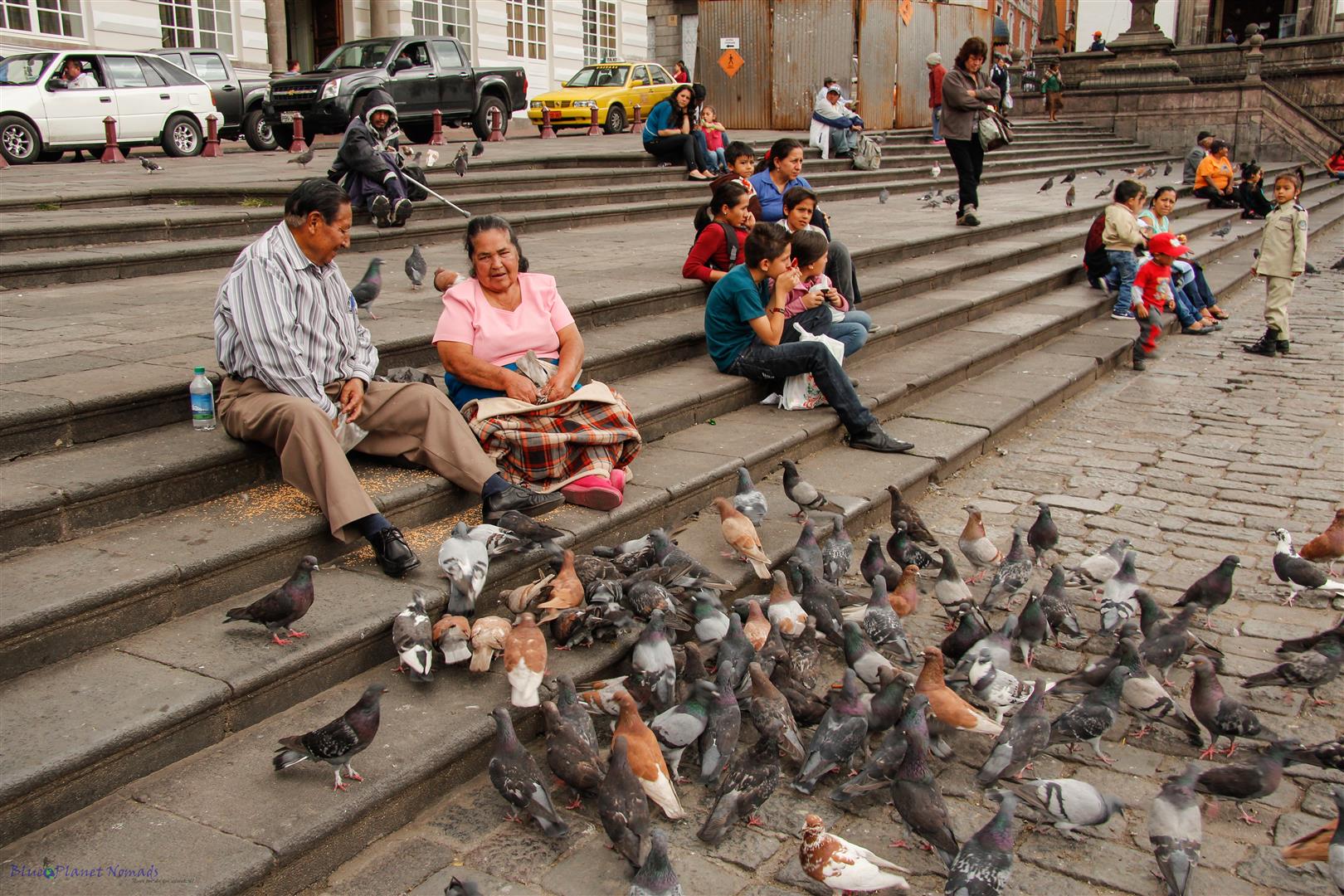
From the Plaza head south west onto Garcia Moreno with its pretty balconied houses. Under the arch at Rocafuerte will bring you to El Museo de la Ciudad (City Museum) We didn’t venture into the museum but its reputed to have an impressive collection with a variety of exhibitions. We planned to revisit it another day but didn’t get around to it.
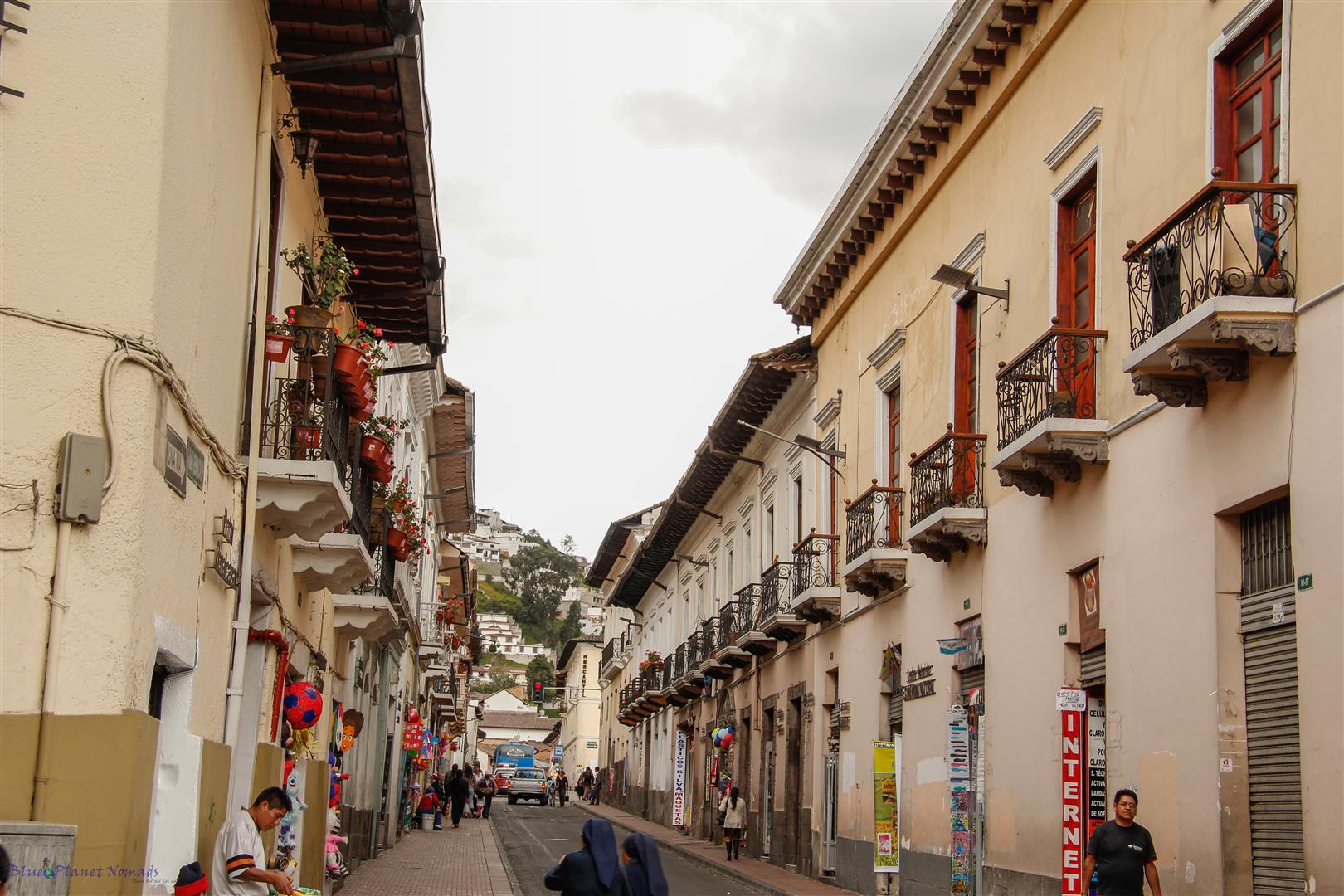
If you continue down Garcia Moreno you will reach the very pretty and narrow cobbled street of La Ronda which is lined with historic colonial balconied houses, shops and artesian galleries. It is said to be the oldest street in the city. By day you can take a slow stroll and marvel at the beautifully restored buildings with their wrought iron balconies adorned with colourful flower pots and Ecuadorian flags. By night the street comes to life with live Ecuadorian beats that spill out of the tiny bars and onto the cobbled street mixed with the aromas of local delicacies.
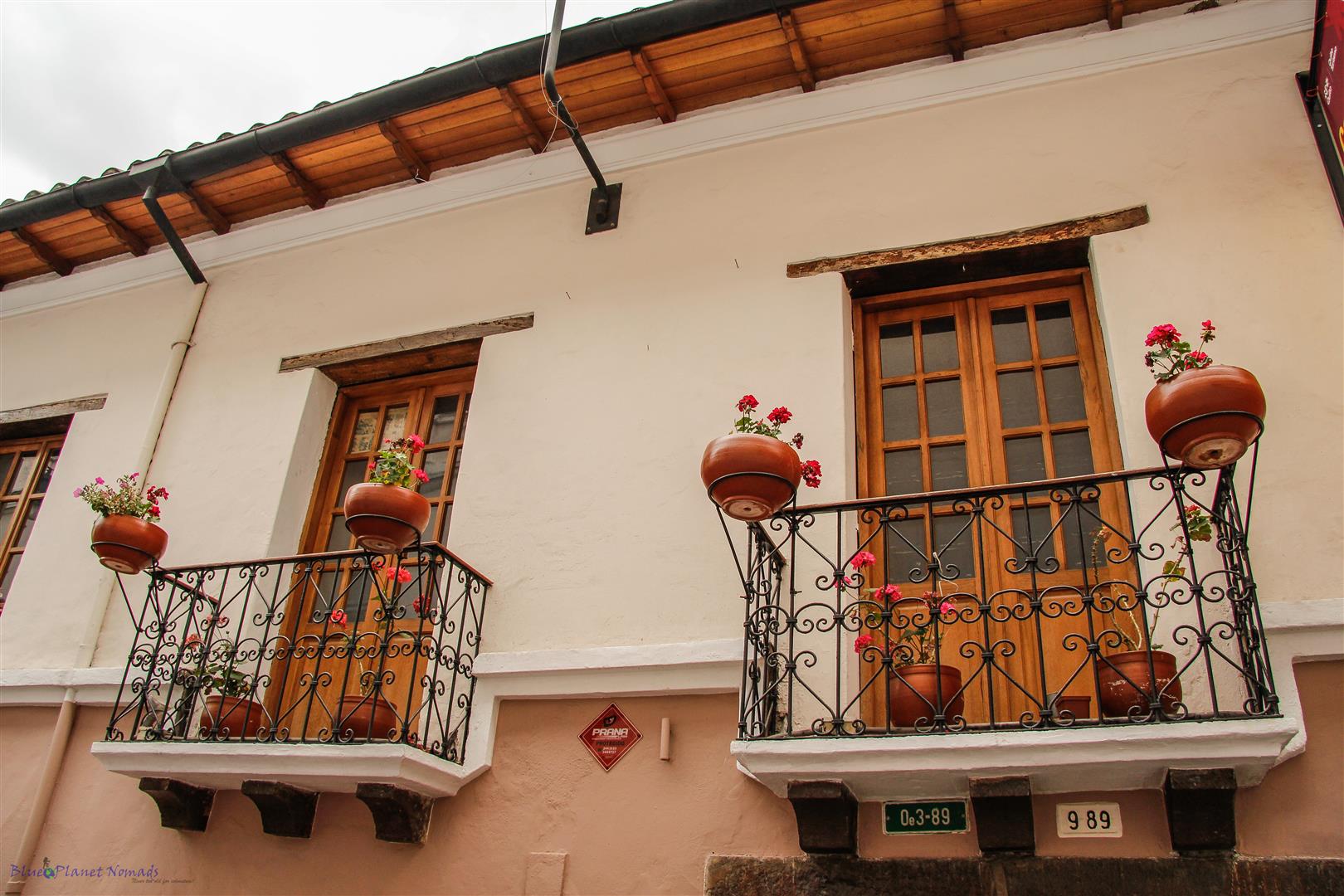
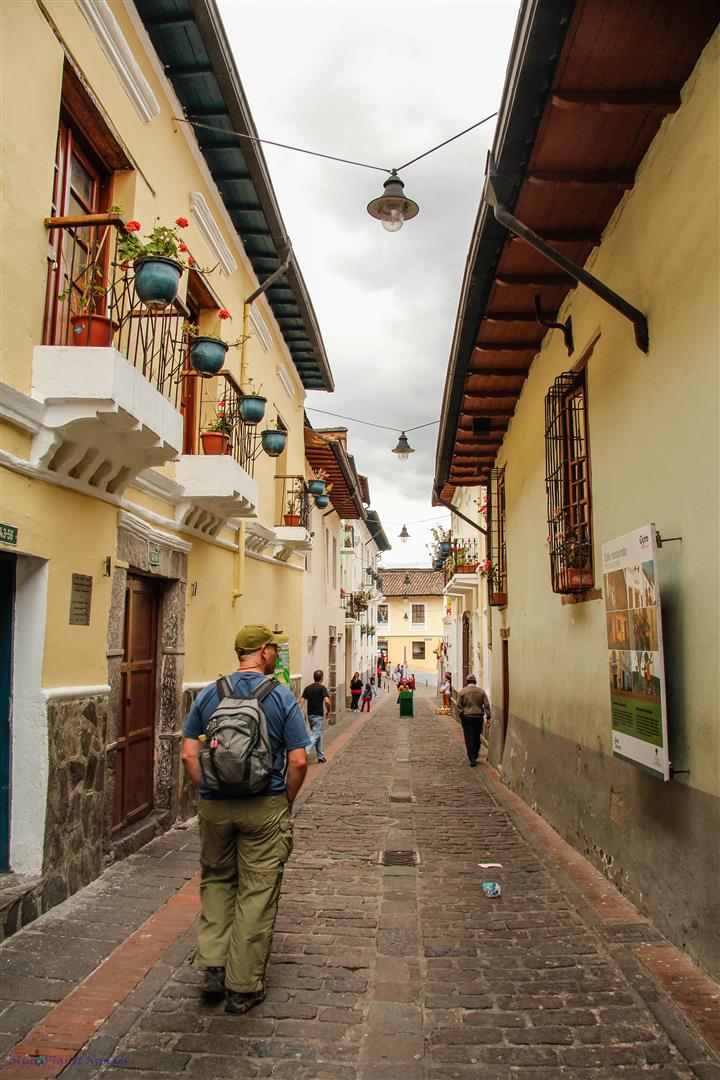
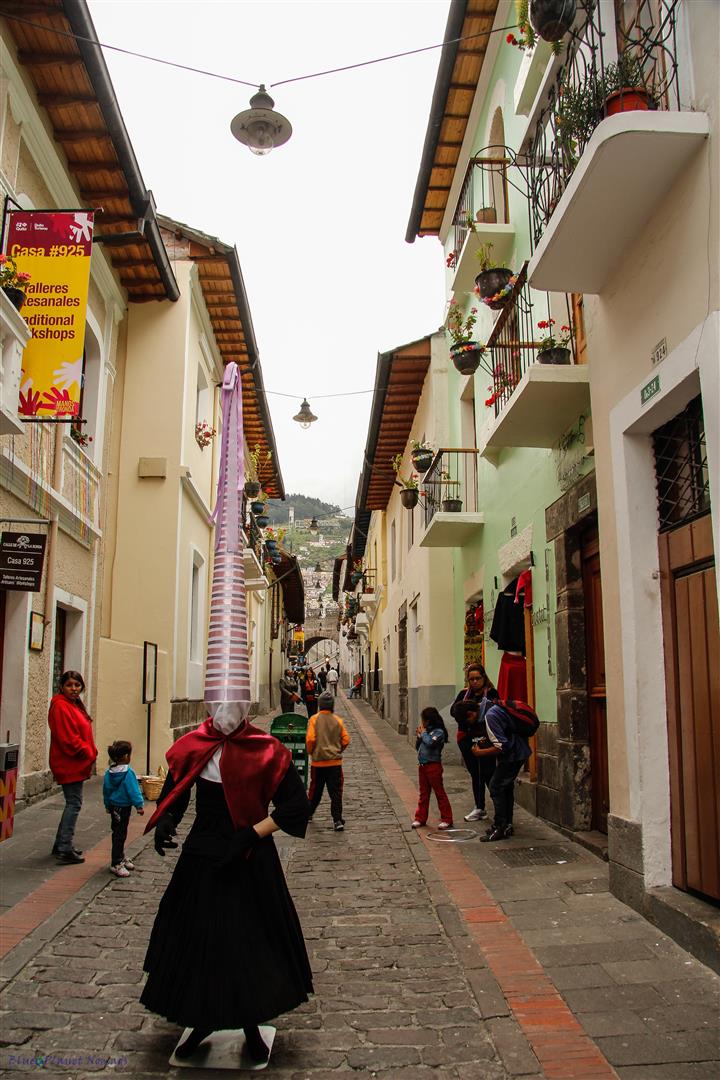
The other end of La Ronda brings you to Guayaquil where you can enjoy some views of Panecillo Hill crowned with a winged Virgin statue. Apparently from the top of the hill you can enjoy panoramic views over Quito. It is advised though if you wanted to take the trip up then do so by taxi or tour bus as the walk up is not safe for tourists as there has been reports of muggings. We gave it a miss and figured a trip up the Teleferico would give us the best views of Quito.
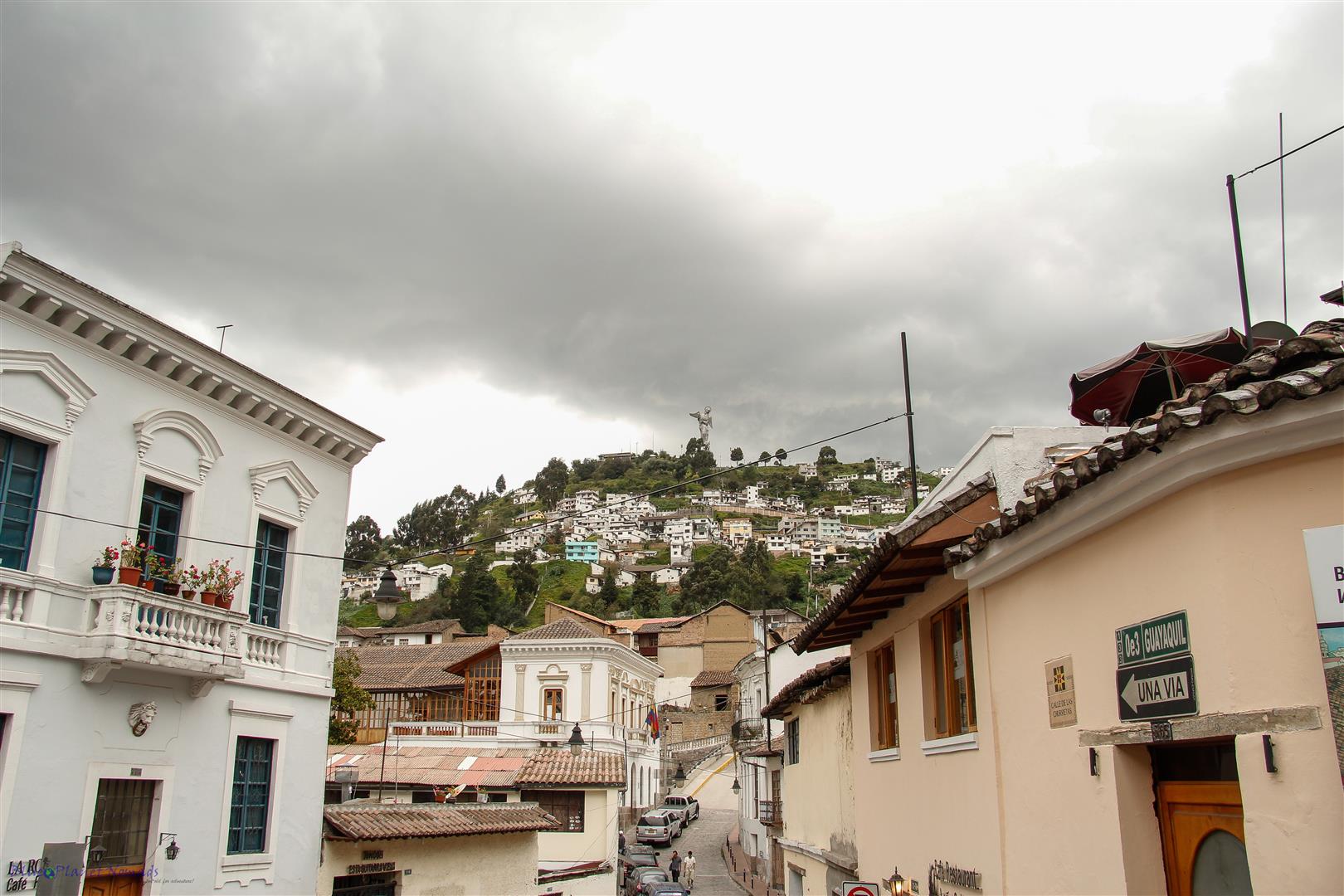
Taking a left at the end of La Ronda will take you to the Plaza and Iglesia de Santo Domingo which dates back to 1581. The Plaza was once a market place where local Indians would trade their wares, these days it is a hub for artist exhibitions.
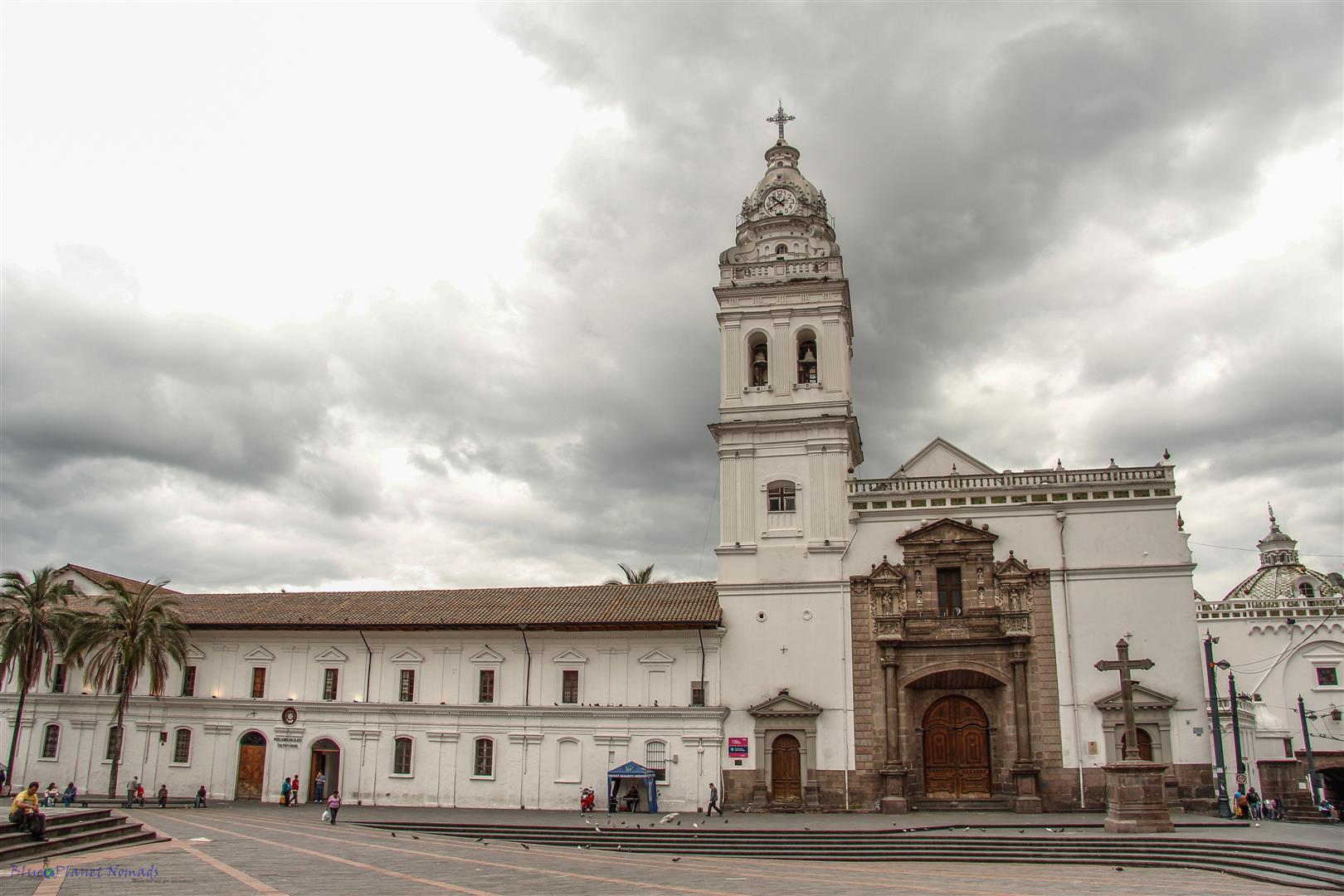
Continue on down Flores where you can admire more Spanish colonial architecture. Flores is also where you will find a cluster of hairdressers/barbers and for only $2 you can get yourself a numero uno all over! At the end of Flores you will come into the Plaza del Teatro, home to the theatre.
A walk down Esmeraldas and Venezuela will bring you to Basilica del Voto Nacional, a Roman Catholic church and is the largest neo-Gothic basilica in the Americas. For a cost you can climb the clock tower for views over the old town.
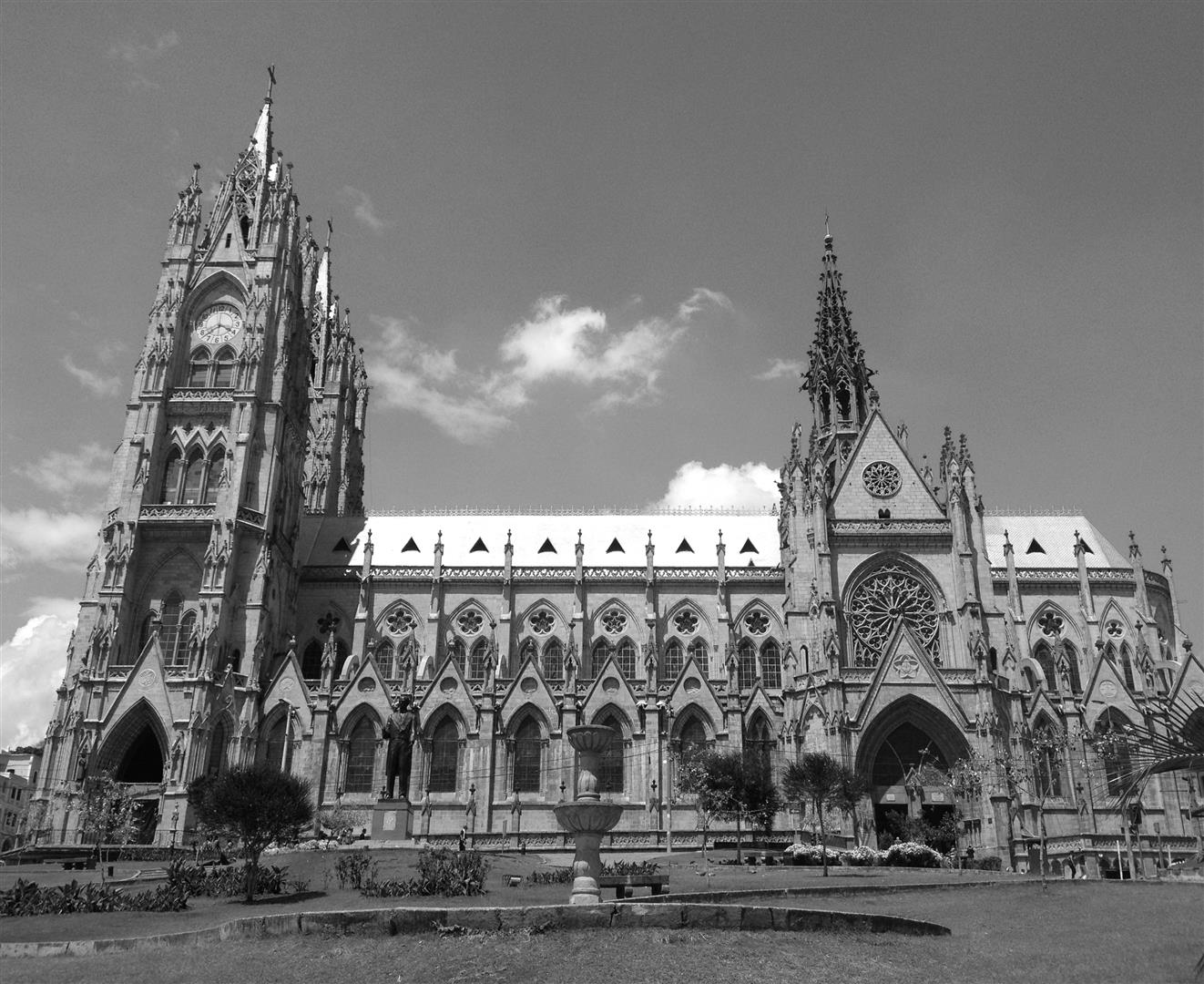
From here head straight down Calidas and back to the busy main street of Guayaquil where you can have a look at the 19th century Observatory in Parque La Alameda. This is where the tour ends.
Staying Safe in Quito
Quito, like many South America cities, does have its fair share of crime, unfortunately. Tourists can be targets of muggings/pickpockets and popular scams. On the plus side, crime against tourists has dropped as there is a large police presence, especially around the old town. In fact Quito has the largest police presence on the streets that we have ever seen in any city. Because of this we felt quite relaxed and safe walking around the old town and even around Mariscal. Having said that, you still need to be alert and common sense will prevent you becoming a victim. The following are things to bear in mind:-
- Keep your camera and other valuables hidden until you need to take a photo, don’t carry your camera around your neck or in your hand unless you have a big burly security guard with you 😉
- Do not walk up Panecillo Hill to see the winged angel as robberies are common on the quiet path up. Take the tour bus or a taxi.
- Two common scams are present: Bird Poo and Mustard. The bird poo scam is when someone will squirt something that looks like bird crap on you when you’re not aware, they will then offer to help to clean it off while relieving you of your wallet. The mustard scam is similar except its a package of mustard on the ground that you might step on and get all over your pants. If anything spills or lands on you then don’t let anyone near you and walk fast to the nearest cafe/restaurant to clean yourself up. It didn’t happen to us and we never saw it but we have heard that it does happen.
- If you’re not sure about a street don’t walk it! If in doubt, ask a local, we found the locals were helpful in warning us not to go up certain streets.
- If you travel on the trolley, (tram) then keep your stuff very close and hidden as it’s notorious for pick pockets.
- Try use ATM’s that are inside a bank or has a security guard. We used the one on the corner of Santiago and Ave 10 Agosto which was reliable, off the street and had a security guard. It was also a block from our accommodation so nice and close! Most of the ATM’s in Mariscal were facing the street and this is one of the worst districts for theft. So use them in the day time only.
We only ever wore hidden money belts and only took credit cards out with us to use the ATM when we needed cash. The rest of the time they stayed in our accommodation.
We spent three weeks in Quito and never had any drama’s. Like any city it’s just a matter of common sense.
Overall, Quito’s old town is beautiful and definitely worth a few hours to enjoy.
If you have enjoyed the photos? then the complete gallery can be viewed in the Trip Photos


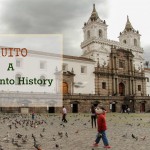
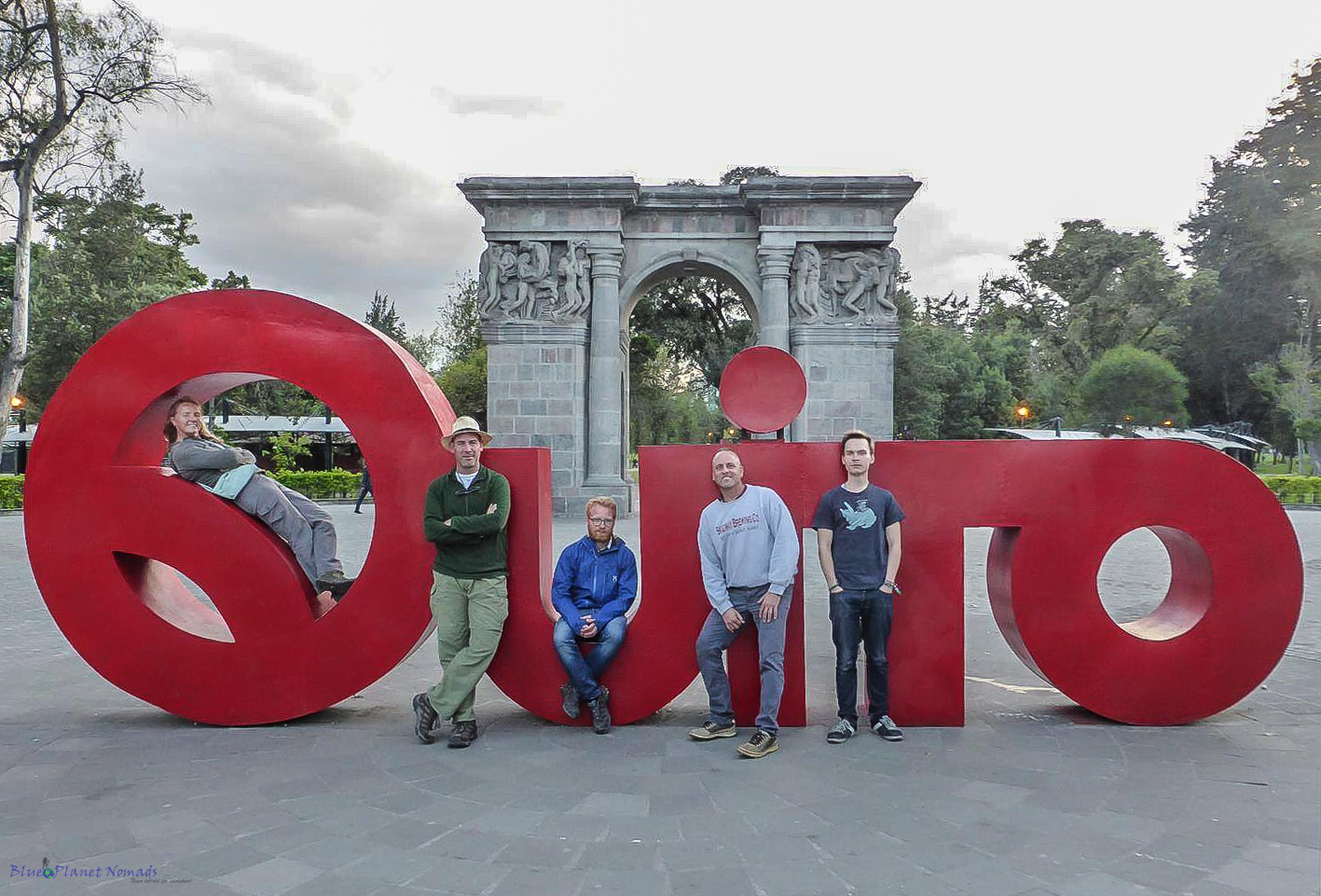


Those cathedrals and churches are amazing. As in the UK and Europe it is hard to imagine how that workmanship was achieved so many hundreds of years ago. You write so well DIL. xx
Thanks MIL 🙂 They are very beautiful and most took a very long time to build, I believe the one in Barcelona (La Sagrada Familia) they are still building and will be 150 years before they complete it!